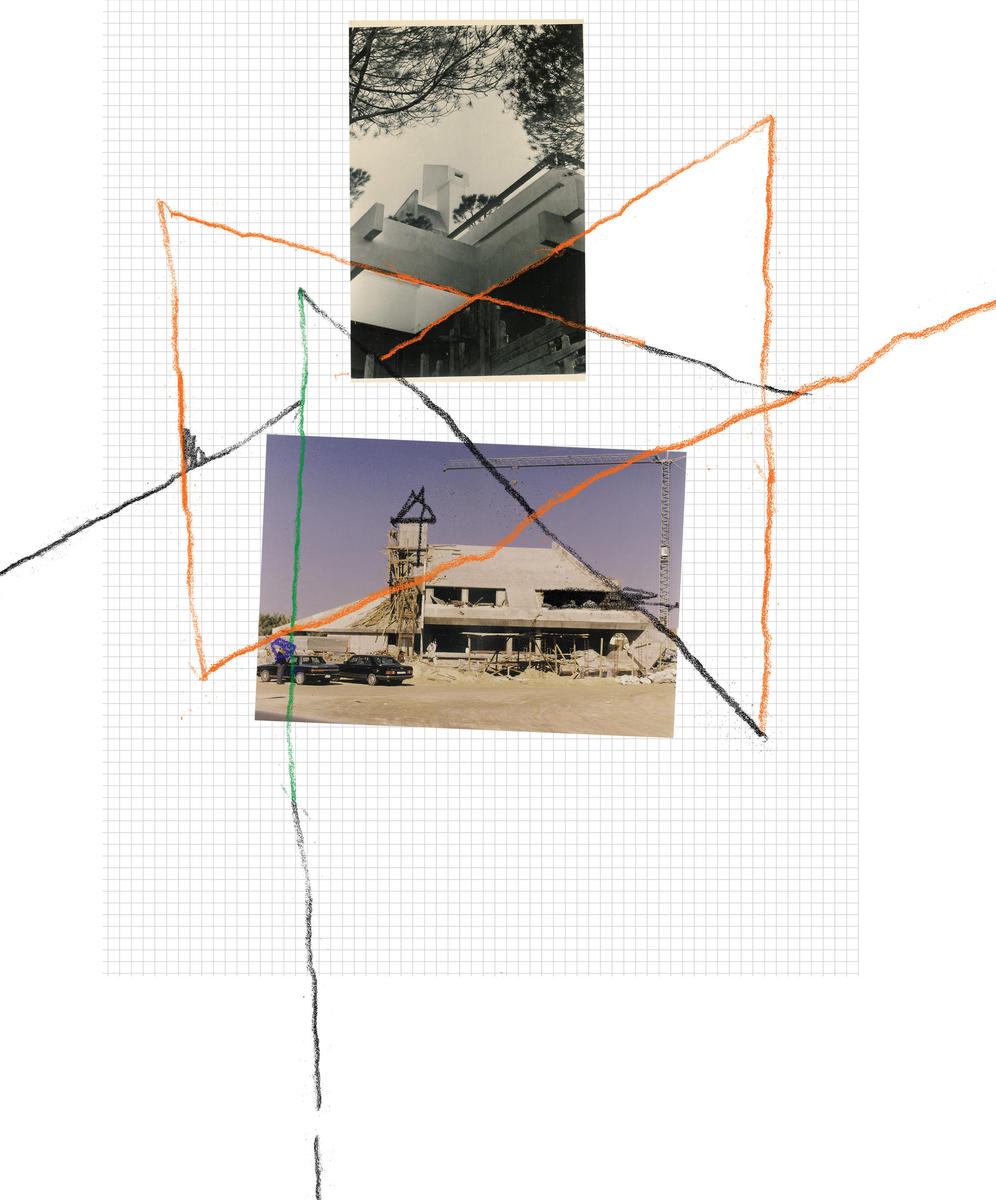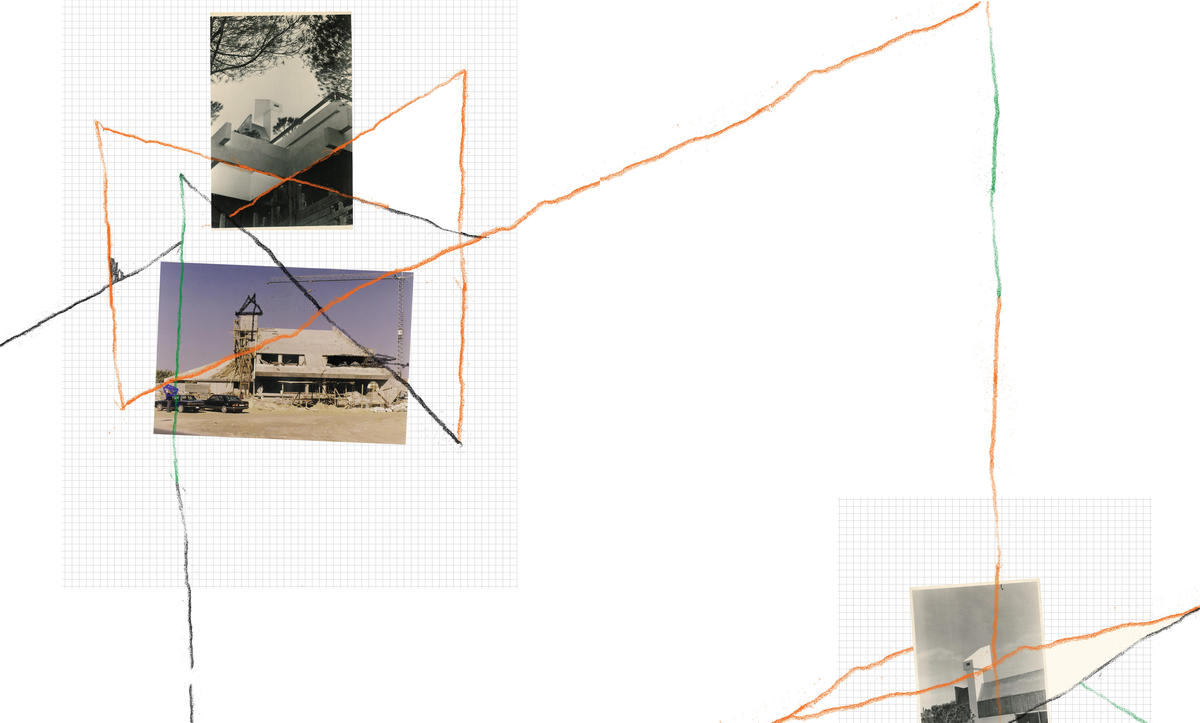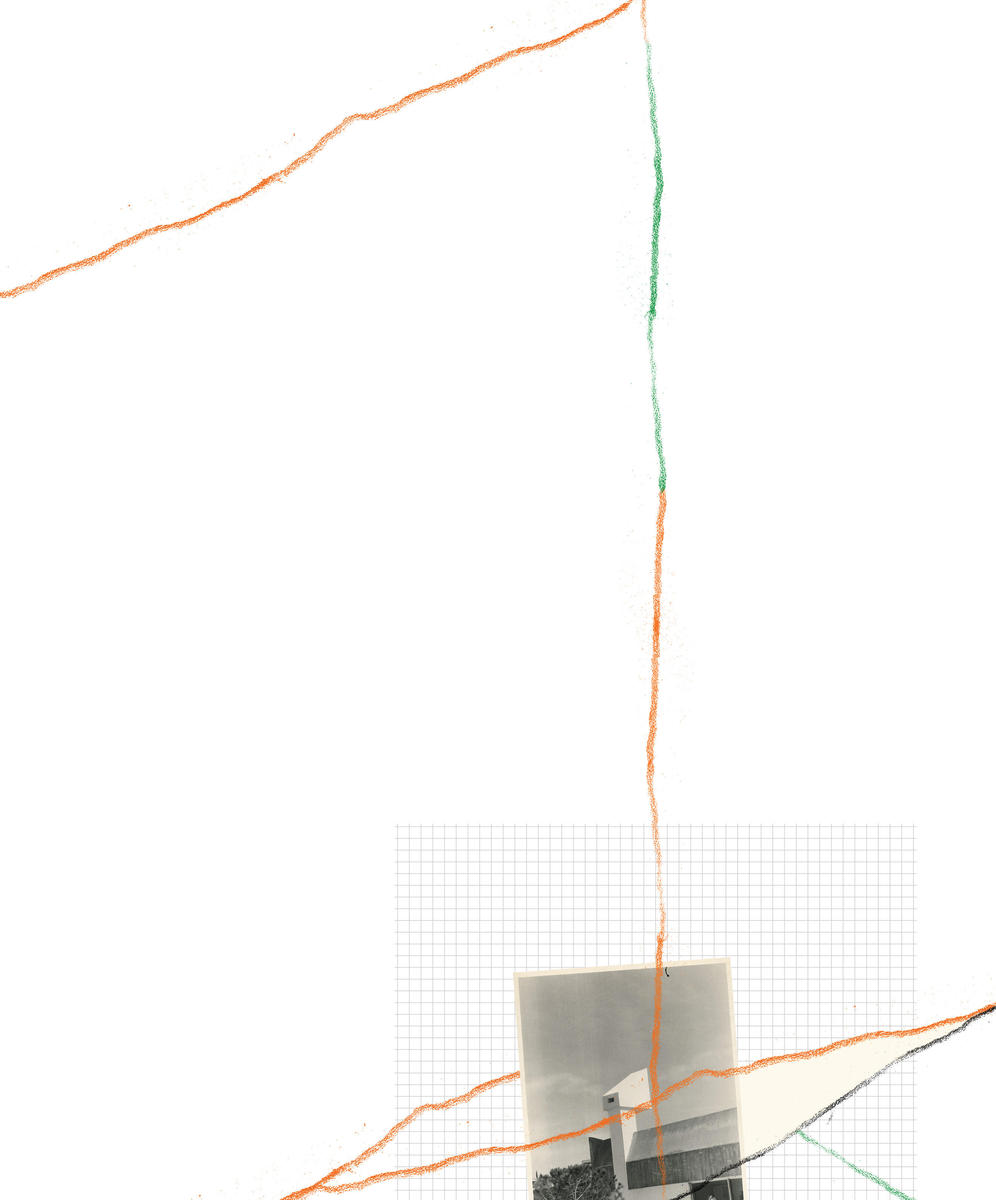
As if seeing himself disappearing, my father would look at his hands and say, “I don’t know what is happening to me.” He wanted to correct some of the proportions of a villa he was working on. He asked for his drawings, and I helped him sit up. His lines, ordinarily sharp and confident, wandered into each other; his crosshatching was muddled. He couldn’t lift his pencil off the paper. He was producing a building that was structurally unsound: the foundations were giving way, and the house was collapsing on him.
As the violence of death made its presence felt in the advanced stages of my father’s cancer, I watched doctors and nurses scramble to give form and shape to what was essentially crumbling. Functionality and productivity were maintained in a body already docile to the mechanics of its labor. Urine, stool, and blood samples were regularly taken, blood pressure and temperature closely monitored. Antibiotics were administered orally and intravenously. My father collaborated in this process, and reacting to the immanence of his death, he obsessively maintained order in his ever-changing diet of drugs.
In bed, he would constantly revisit his CAD drawings. With a pencil, he increased shading around the pillars of the front elevation of the house to accentuate their presence. With horizontal markings, he indicated that he wanted to increase the height of the facade and enlarge the windows in order to let in more light. He meticulously added details onto the fer forgé feature on top of the entrance, as well as lines demarcating individual bricks that were to cover the front walls.
His colleagues would apply the changes indicated, rarely mentioning deadlines or updating him on the client’s feedback. Everyone — doctors, nurses, visitors, architects — was in on this elaborate and collective act of fiction with my father. Visits and conversations became prescribed, with no talk of the odds of survival. Through the cracks of this system of not speaking so as not to die, more layered forms of communication gradually arose between us. As if slipping coded messages past the presence of a supposedly silent narrative, he would measure his new, skinny knee between his thumb and his index finger and compare it to mine. Our dynamic was redefined with the worsening of his health. There was now a context for physical contact as I would help him to sit up, for example. Tiny gestures became loaded with meaning.

It was after one such disguised display of affection that my father delivered his most damaging and complex act of defiance against the normalizing mechanisms imposed upon him: he produced the blueprint for a failed monument. It was a villa that could not stand. Its tiles were disintegrating, its furniture was sliding inward. He had increased the size of the openings on the outside, while inside he had done away with some windows entirely and changed the contour of the house to accommodate box window appendices. He had scrambled the geometric pattern on the marbled floor of the entrance, removed doors, and shifted walls. In the main hall of the house, my father had jotted instructions to move the staircase away from the wall: he had collapsed the stairs into formlessness.
During the funeral sermon, the priest continuously referred to Papken the architect. He said a prayer and looked around and smiled. Coming over after to pay his respects, he went through the ritual of remarking how much I had grown since the last time he had seen me. “Yalli khallaf ma maat,” he said. (“He who begets does not die.”)
It is no surprise that we find comfort in the continuity of the narrative axis, which by definition is directional and endless. But my father’s villa drawings were not intended as a last attempt by an architect to concretize a trace of passage; on the contrary, they were an act of erasure. As he quietly died one night, shutting down his body organ by organ, he dissolved the foundations of the buildings he had spent his life erecting. Diligently, he eliminated anything that would distract him from setting himself free in the entropy that is the process of returning to dust.
